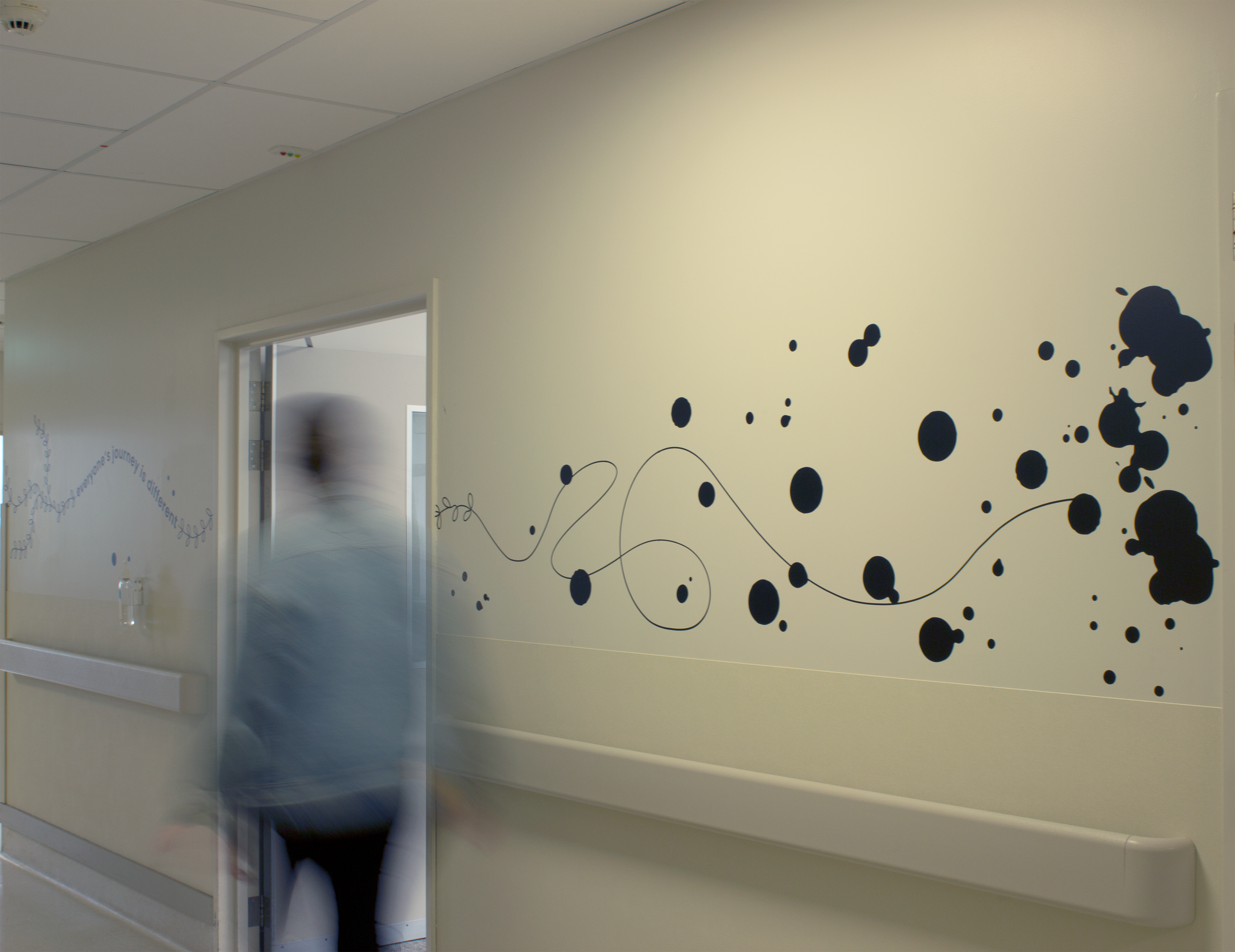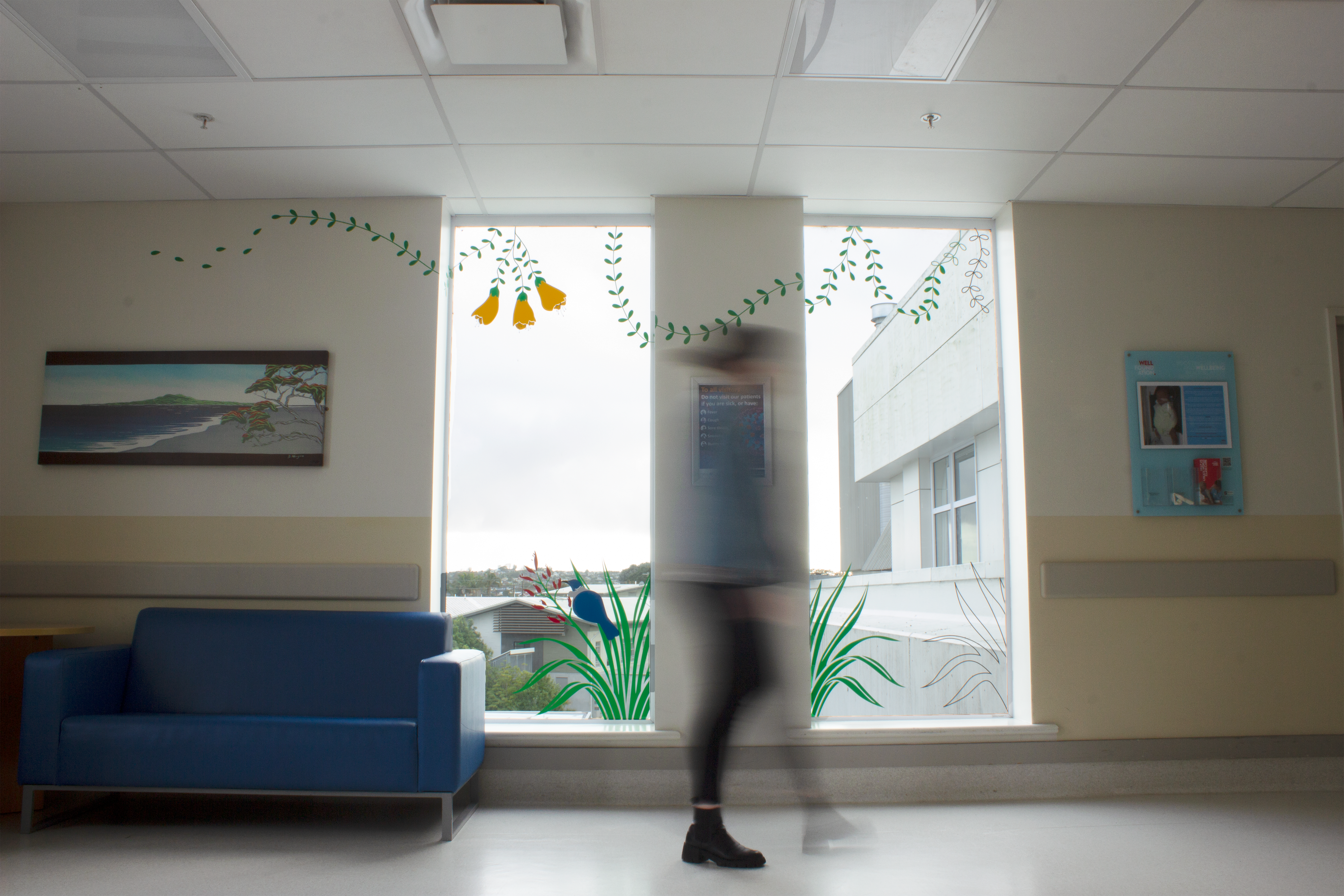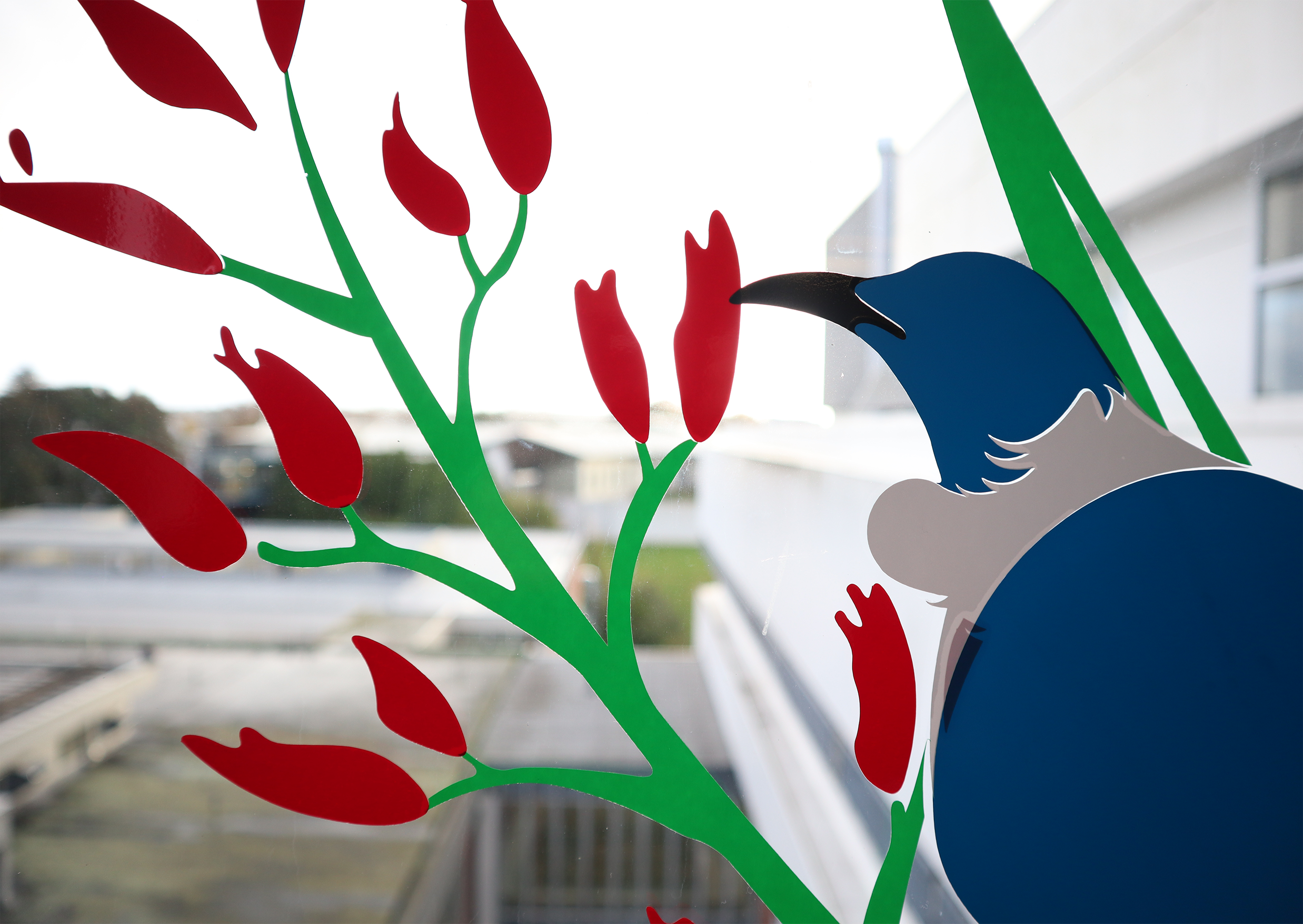

Katie Twisleton
Communicating a Healing Environment
Communicating a Healing Environment
The physical environment of a hospital caters to the technological advancements in medicine, focused on curing illness rather than supporting the wellbeing of people.
The physical environment of a hospital caters to the technological advancements in medicine, focused on curing illness rather than supporting the wellbeing of people. This project explored how graphic design might transform the experience of patients, and their whānau and healthcare professionals, on a stroke ward. After a stroke, many people experience mental and physical impairments. This affects their ability to move and communicate as well as how they respond to their surrounding environment. The hospital environment can heighten post stroke anxieties.
Action research and human-centered design approaches were used to help research participants share inpatient experiences and challenges faced when recovering from a stroke. Observations and expert interviews revealed those areas on the stroke ward that may be activated through graphic design to help improve healthcare experiences. The research also revealed the challenges designers face when working in complex healthcare environments and challenges that are associated with time and resource restrictions associated with these environments. These challenges meant finding creative ways to engage participants in research. Installing designed prototypes in the stroke ward revealed how graphic design can enhance patient and family experiences in this space but also influence the behavior of staff.
The final output incorporated ideas of holistic healing to support those recovering from a stroke by bringing nature into the stroke ward environment through designed installations. The journey to recovery for stroke patients was communicated through the designs. This journey begins in the ward- the ink splotches and scribbles represent the confusion and darkness many people face after experiencing a stroke (due to the damage and impairments they experience). The scribble then transforms into an outline of kōwhai leaves that eventually split off, emphasizing how everyone’s journey to recovery is different. The line begins the story in the welcome area of the stroke ward at North Shore Hospital. The black line then starts to blossom into a garden of kōwhai and harakeke, providing hope and an engaging welcome for patients entering the ward, and represents an ongoing journey of growth for those leaving to continue their recovery journey.
These graphic installations highlight the potential graphic design to be used to transform clinical environments, and to aid the recovery of patients. The installed graphics aim to provide hope and small moments of happiness to those on the ward. Ongoing feedback from staff has also revealed that the graphics have become an important part of patient rehabilitation through occupational exercises and are used in activities to help promote ongoing independence. This illustrates how graphic interventions can be used to change staff and patient activities, support new and different conversations and connections that can have a restorative effect on the wellbeing of patients and their whānau, and healthcare professionals.


